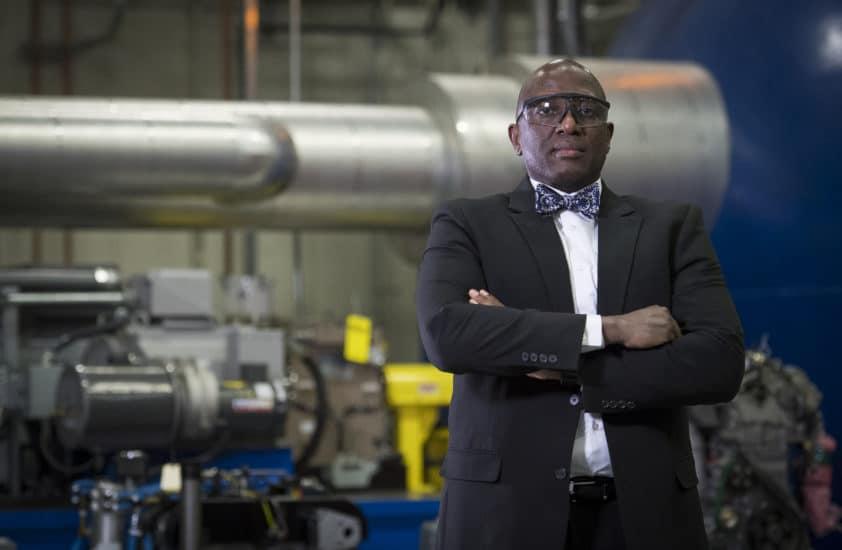US Army Recruits VTOLs for the Frontline

When it comes to surprising your adversaries on the battlefield, silence is golden. As are the logistical advantages offered by an aircraft that requires no runway.
Which is why the US Army Research Laboratory (US ARL) is working with Uber and researchers at the University of Texas at Austin to develop to develop silent rotor technology for vertical takeoff and landing today..
“We’re looking to inform requirements for functional VTOL Unmanned Aerial Systems (UAS deployed as early as 2023,” for consideration under the Future Vertical Lift (FVL) family of platforms according to Dr. Jaret C. Riddick, director of the Army’s Vehicle Technology Directorate. Key to this is an innovation known as stacked, co-rotating rotors – having two rotors, one atop the other, operating in unison. The result is a near-silent audio profile, a feature that also appeals to ARL’s development partner, Uber Elevate.
The Uber and Army Partnership
From catapults to cannons to flight-borne weapons, VTOLs are the next phase in the evolution of how wars are fought. The underlying principles that support development of VTOLs for military operation are not that different from the next chapter in personal transportation. Both the US Army and Uber plan to be ready vis a vis their partnership.
The Army is developing unmanned aerial vehicles (UAVs) for Intelligence, Surveillance and Reconnaissance (ISR) missions or other types of command and control missions. Uber, planning to operate air taxis capable of carrying four passengers plus their belongings is looking at piloted vehicles (at least at first). Yet, Uber’s vision to operate an air taxi fleet benefits enormously from the same quiet rotorcraft the Army seeks.
Uber hopes to take off and land from skyports that it will operate in some of the world’s largest cities (Los Angeles and Dallas-Ft. Worth have signed on as potential early adopters). Operating thousands of air taxis daily to whisk passengers to their destinations in a fraction of the time of land-based fleets requires those cabs be good neighbors – quiet, unobtrusive neighbors.
The project began to take shape when ARL representatives met Mark Moore, a 30-year NASA veteran developing eVTOLs at an American Helicopter Society Forum. Moore, one of the lead developers for Uber’s air taxi initiative at the Helicopter Society Forum, was deep-seated in the workings of rotorcraft aeromechanics and familiar with the expertise of the Army Research Development Engineering Command (RDECOM). This formed the basis for the Cooperative Research and Development Agreement (CRADA) the two organizations ultimately executed to move the VTOL project forward.
In this public-private partnership, the Army and the University of Texas at Austin will use their super-computing and modeling capabilities to forecast capability using the Army’s supercomputers and the University of Texas – Austin’s facilities. The goal, the Army says, is to reduce the currently detectable noise levels to something quieter than background noise or rushing wind.
In addition to mitigating the noise generated by the VTOL’s rotors, the Army is developing a “multi-fuel-capable hybrid electrical propulsion system,” say Riddick. “The technology is targeting fuels ranging from diesel and Jet Propulsion A to alcohol and bio-derived fuels. The target for this smart technology will be able to recognize what type of fuel is being used and adjust operations accordingly. As the vehicle approaches its target, the goal is for it to switch to electric power silencing the engine nearly completely.”
The smart technology will be able to recognize what type of fuel is being used and adjust operations accordingly. As the vehicle approaches its target, at around 50 miles away, it can switch to electric power silencing the engine nearly completely.”
From the Army’s perspective, Riddick says, “more payload is always better. The airframe being developed by Uber or the vehicle manufacturers they use will be of interest to us. The scale and payload is still open from the Army side, but the development in the Uber ecosystem will have some impact on the Army side.”
VTOL Challenges
The biggest challenges the project faces are the controls for the mechanical systems. They are quite complex, so developing software controls to manage that is a priority.
Hardware is another area challenging the development of stacked co-rotating rotors. “The co-rotating rotors have to be set at certain angles with respect to one another,” Riddick points out, “and maintaining those angles very specifically requires they be adjusted during operation.”
The nature of war and the battles fought to win them hasn’t changed in thousands of years. What has changed is the technology used to fight those battles. From catapults and suits of armor to cannons and eventually flight-borne weapons. VTOLs are the next phase in the evolution of how wars are fought and the US Army will be prepared. Coincidentally, the underlying principles that support development of VTOLs for military operation are not that different from the next chapter in personal transportation. Uber plans to be ready for that too vis a vis its collaboration with ARL and its research partners.


